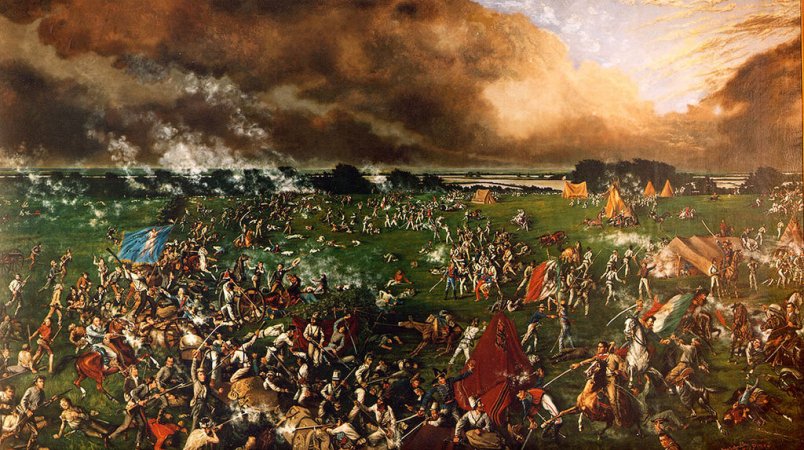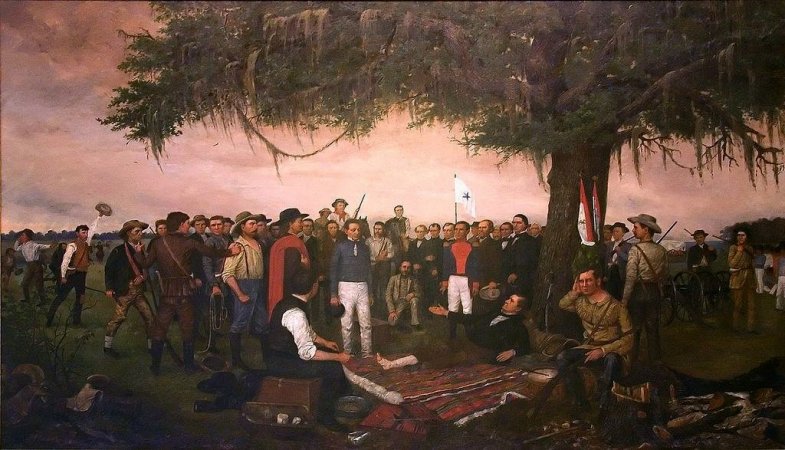Texas Revolution – A Courageous Fight For Independence
Ellen Lloyd - AncientPages.com - The modern city of Houston, Texas, is named after General Sam Houston, who led his troops to victory against Mexicans at the Battle of San Jacinto in 1836.
Not every revolution is as famous as the one that took place in France (1789- 1799), but to people living in Texas, the uprising at the end of 1835 dramatically changed the political situation and their living conditions.
Henry Arthur McArdle's 1895 painting, The Battle of San Jacinto. Credit: Public Domain
The Texas Revolution lasted from October 2, 1835, to April 21, 1836, and led to Texas’ independence from Mexico and the founding of the Republic of Texas (1836–1845).
Many factors led to the revolution. The main reason behind it was cultural and political disputes between Anglo-Americans who lived in Texas and the Mexican government.
When Mexico gained independence in 1821, colonists had fewer restrictions. As a result of this, thousands of settlers moved from the southern USA to Texas.
These newcomers made Texas their home, and soon, there were more Anglo-Americans in the area than Spaniards and Mexicans. The situation between the English and Spanish-speaking population became tense.
Mexico felt the country was losing control over Texas and responded in 1835 by introducing “Siete Leyes” – the Seven Laws.
This angered the Anglo-American population in Texas because these laws gave the Mexican President Antonio López de Santa Anna (1794 – 1876) more political power. This led to the Texas Revolution in 1835.
Using guns, people in the Mexican province of Texas forced federal troops out of the region. Shortly after this, a temporary Texas government was established. Its task was to decide whether Texas should become an independent state or remain under the control of Mexico.
President Santa Anna was furious and responded by sending the Mexican army that he led himself. The Mexican President was determined to end the revolutions and crush the colonists, but his plans failed.
When the revolutionists and the Mexican army troops confronted each other, it became clear that the Anglo-Americans had no intentions to surrender. The “Runaway Scrape”, the name Texans applied to their flight from their homes started in January 1836. When Mexicans gathered on the Rio Grande, people left the area.
In 1836, after fighting intensely for 13 days, a group of Texan volunteer soldiers was brutally killed by the Mexican Army. President Santa Anna had ordered his troops to take no prisoners and only a small number of Texans were spared.
The heroic Battle of the Alamo became a symbol of Texans’ resistance and fight for independence.
"Surrender of Santa Anna" by William Henry Huddle (1847 - 1892) shows the Mexican president and general surrendering to a wounded Sam Houston, battle of San Jacinto. Credit: Public Domain
On April 21, 1836, everything changed, but this time in favor of the Texans.
President Sam Houston (1793 -1863) led about 800 Texans against Santa Anna’s Mexican force of 1,500 men at San Jacinto. While shouting “Remember the Alamo” the Texan army attacked and defeated the Mexican forces.
President Santa Anna was captured and agreed with President Houston to end the war.
The victory at San Jacinto ensured the success of Texan independence.
Updated on March 11, 2024
Written by Ellen Lloyd – AncientPages.com
Copyright © AncientPages.com All rights reserved. This material may not be published, broadcast, rewritten or redistributed in whole or part without the express written permission of AncientPages.com
Expand for referencesBarker, Eugene C. "Stephen F. Austin and the Independence of Texas." The Quarterly of the Texas State Historical Association13, no. 4 (1910): 257-84. http://www.jstor.org/stable/30242989.
More From Ancient Pages
-
 Tragic Reign Of Caterina Cornaro – The Last Queen Of Cyprus And Patron Of The Arts
Featured Stories | Jul 4, 2019
Tragic Reign Of Caterina Cornaro – The Last Queen Of Cyprus And Patron Of The Arts
Featured Stories | Jul 4, 2019 -
 Grutte Pier – Legendary Giant Frisian Freedom Fighter Who Sought Revenge
Featured Stories | Dec 20, 2018
Grutte Pier – Legendary Giant Frisian Freedom Fighter Who Sought Revenge
Featured Stories | Dec 20, 2018 -
 On This Day In History: ‘Sue’ Largest Tyrannosaurus Rex Skeleton Discovered In South Dakota – On August 12, 1990
News | Aug 12, 2016
On This Day In History: ‘Sue’ Largest Tyrannosaurus Rex Skeleton Discovered In South Dakota – On August 12, 1990
News | Aug 12, 2016 -
 Proof That Neanderthals Ate Crabs 90,000 Years Ago Is Another ‘Nail In The Coffin’ For Primitive Cave Dweller Stereotypes
Archaeology | Feb 7, 2023
Proof That Neanderthals Ate Crabs 90,000 Years Ago Is Another ‘Nail In The Coffin’ For Primitive Cave Dweller Stereotypes
Archaeology | Feb 7, 2023 -
 Ji Gong: Legendary Ancient Monk Who Defended People Against Injustice
Chinese Mythology | Jan 31, 2016
Ji Gong: Legendary Ancient Monk Who Defended People Against Injustice
Chinese Mythology | Jan 31, 2016 -
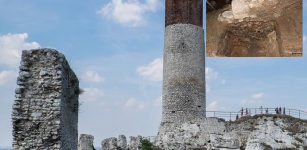 Mysterious Unknown Caves And Tunnels Discovered Beneath The Olsztyn Castle
Archaeology | Jul 31, 2020
Mysterious Unknown Caves And Tunnels Discovered Beneath The Olsztyn Castle
Archaeology | Jul 31, 2020 -
 Pacific God A’a: Fascinating Polynesian Sculpture Designed To Carry A Human Skull And Bones
Archaeology | Apr 9, 2016
Pacific God A’a: Fascinating Polynesian Sculpture Designed To Carry A Human Skull And Bones
Archaeology | Apr 9, 2016 -
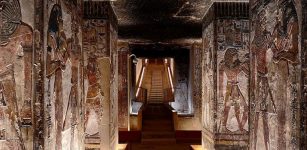 Why Pharaoh Seti I’s Tomb Had To Be The Most Glorious And Largest Ever Built In Valley Of The Kings
Featured Stories | Jun 19, 2021
Why Pharaoh Seti I’s Tomb Had To Be The Most Glorious And Largest Ever Built In Valley Of The Kings
Featured Stories | Jun 19, 2021 -
 Mysterious Ancient Stone Structures Discovered In Illinois Remain Unexplained – Archaeologists Say
Featured Stories | May 26, 2024
Mysterious Ancient Stone Structures Discovered In Illinois Remain Unexplained – Archaeologists Say
Featured Stories | May 26, 2024 -
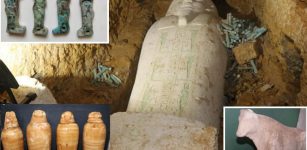 Hundreds Of Marvelous Ancient Egyptian Treasures Found Inside Tombs In Minya
Archaeology | Oct 27, 2020
Hundreds Of Marvelous Ancient Egyptian Treasures Found Inside Tombs In Minya
Archaeology | Oct 27, 2020 -
 Cherokee Gourd Rattles – Protection Against Evil Spirits And Other Danger
Ancient Traditions And Customs | Jun 7, 2019
Cherokee Gourd Rattles – Protection Against Evil Spirits And Other Danger
Ancient Traditions And Customs | Jun 7, 2019 -
 DNA Shows First Scandinavians Followed Two Distinct Migration Routes
Archaeology | Jan 11, 2018
DNA Shows First Scandinavians Followed Two Distinct Migration Routes
Archaeology | Jan 11, 2018 -
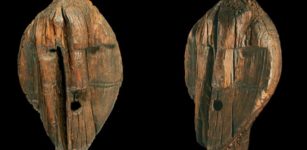 Does The Shigir Idol Depict Demons And Evil Spirits?
Archaeology | May 3, 2018
Does The Shigir Idol Depict Demons And Evil Spirits?
Archaeology | May 3, 2018 -
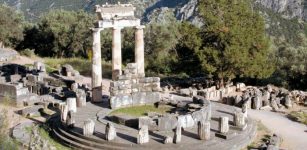 Ancient Greeks Built Sacred Temples On Earthquake Sites To Gain Spiritual Power
Archaeology | Sep 19, 2017
Ancient Greeks Built Sacred Temples On Earthquake Sites To Gain Spiritual Power
Archaeology | Sep 19, 2017 -
 Machu Picchu: Ancient Incan Sanctuary Intentionally Built On Faults
Archaeology | Sep 27, 2019
Machu Picchu: Ancient Incan Sanctuary Intentionally Built On Faults
Archaeology | Sep 27, 2019 -
 Lifestyle And Face Of 7th-Century Anglo-Saxon Teen – Reconstructed
Archaeology | Jun 20, 2023
Lifestyle And Face Of 7th-Century Anglo-Saxon Teen – Reconstructed
Archaeology | Jun 20, 2023 -
 142,000-Year-Old Shell Beads Found In A Cave Are The Oldest Known Evidence Of Human Communication
Archaeology | Oct 16, 2021
142,000-Year-Old Shell Beads Found In A Cave Are The Oldest Known Evidence Of Human Communication
Archaeology | Oct 16, 2021 -
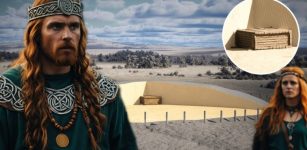 Who Is Buried In The Extremely Well-Preserved 2,600-Year-Old Celtic Chamber Tomb Found Near Riedlingen, Germany?
Archaeology | Oct 24, 2024
Who Is Buried In The Extremely Well-Preserved 2,600-Year-Old Celtic Chamber Tomb Found Near Riedlingen, Germany?
Archaeology | Oct 24, 2024 -
 Mysterious Deserted Medieval Village And Castle Discovered In The Harz Mountains – 2,000 Artifacts Were Found
Archaeology | Nov 14, 2023
Mysterious Deserted Medieval Village And Castle Discovered In The Harz Mountains – 2,000 Artifacts Were Found
Archaeology | Nov 14, 2023 -
 Study Traces DNA Of Inca Emperors To Their Modern-Day Descendants
Archaeology | May 29, 2018
Study Traces DNA Of Inca Emperors To Their Modern-Day Descendants
Archaeology | May 29, 2018

